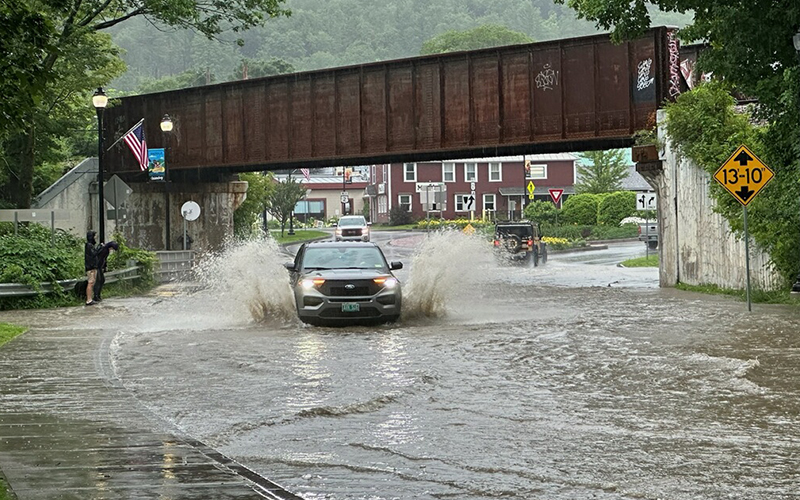Waterbury officials, reporters and community members have been busy the last few weeks keeping the community up to date on the flooding that hit the town on July 9 and 10. The Waterbury Roundabout was updating its online stories and social media constantly with the help of many community members who sent in photos and updates. The town’s select board was also providing information to the community via its website, WDEV radio, The Roundabout, and an email listserve.
“We worked hard to get information out by as many channels as possible, this included the Waterbury Roundabout website and Facebook page, WDEV local radio, the town website www.waterburyvt.com with an alert banner on top linking to a live document that was continually updated by coordinators and volunteers, select board members' personal social media pages, and mass emails to folks who signed up via a Google form,” said select board vice chair Dani Kehlmann. “Information was constantly changing (sometimes minute by minute during the first few days) such as road closures, new severe weather alerts, evacuations, and the evolving plan for cleanup, recovery, and more.”
Lisa Scagliotti, editor/reporter at the Waterbury Roundabout, said the online news outlet became a hub of people looking for and sharing information. Readers sent in photos and updates from their areas. “That was really cool to see,” she said. While on a typical day, The Roundabout’s web traffic is around 1,000 or fewer visits, on Monday, July 10, it saw 5,700 visits and 6,500 on Tuesday, July 11. She reported that web traffic stayed high for days as people were looking for the latest information on the flooding. She said “It’s amazing to see how engaged” people were.
Scagliotti also gives credit to all the news outlets around the state that were working hard to inform people about how the floods had impacted their communities. “There’s been amazing coverage everywhere. Everybody’s doing good reporting. It’s all part of the same goal to let people know what’s happening.”
In Waterbury, “The select board met on Tuesday, Wednesday, and Thursday, then again the following Monday in official capacity,” Kehlmann said. “Individual members were volunteering, coordinating, and reaching out to our constituents on an ongoing basis. Community members were largely in attendance to listen to updates as we had officials such as the municipal manager, fire chief, public works director, and others speak on the impacts to the town and what efforts were being put in place for recovery. Citizens asked questions about cleanup, volunteering, and impact to infrastructure. While we are all sad and concerned about the damage done, it's important to note that mitigation efforts post-Irene did help our town immensely and put us in a stronger position for this flood. Additionally, we feel fortunate to have so many incredible municipal staff members and volunteers. Of note, many are concerned for the aid they'll receive from insurance and/or FEMA and the impact of repeated flood damage on their ability to maintain coverage and receive federal emergency assistance. Citizens and officials alike know that a "100-year flood" has now come to Waterbury twice in 12 years and we are likely to see more natural disasters in our future, so we are intent on looking toward to future to see how we can best prepare for what is likely to come.”
Scagliotti said, though some buildings were damaged, the extent of the damage to Waterbury was less destructive than during Tropical Storm Irene.
Volunteers were helping residents and business owners apply for FEMA aid at the town offices, where residents could also find clean water and other supplies. Businesses did their part. Kore Power sent employees into the community to go door-to-door and help people empty basements that had flooded. Darn Tough closed its factory to deal with the response and handed out lots of its socks.
“Other municipalities such as St. Albans, South Burlington, Milton, Stowe, and others helped by lending or renting equipment, work crews, and other supplies,” Kehlmann said. “It's important to note how grateful we are for all who helped in any capacity.”













